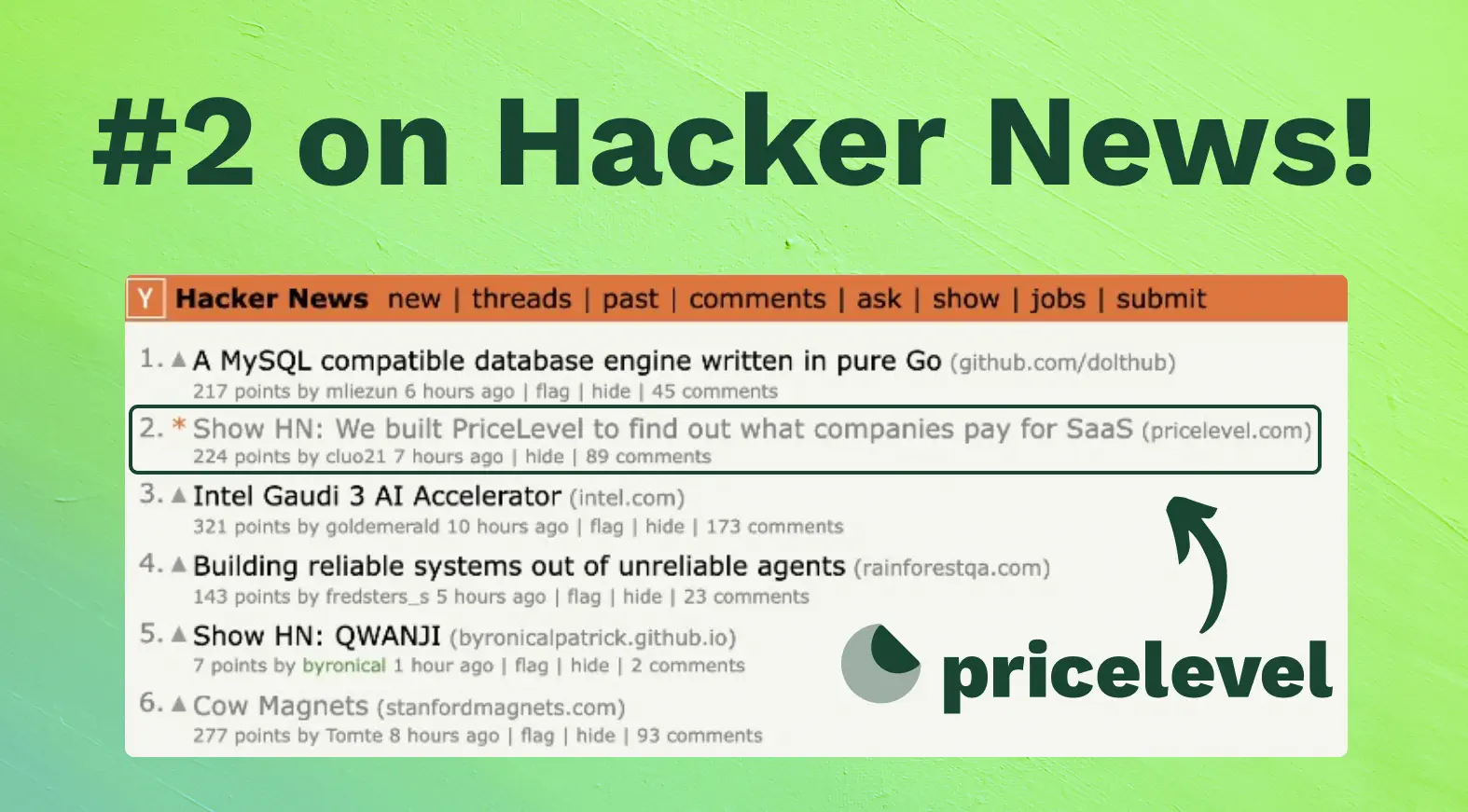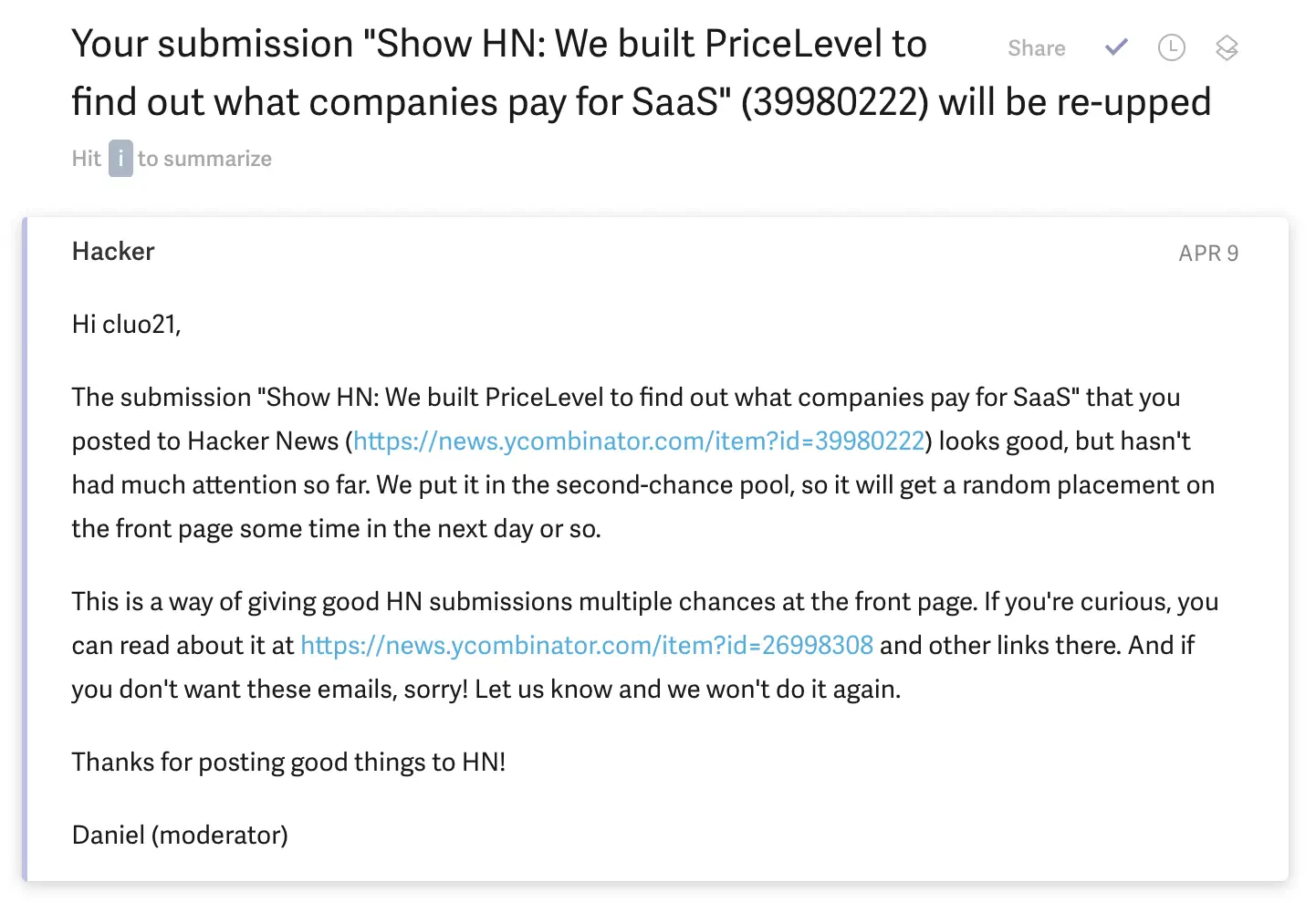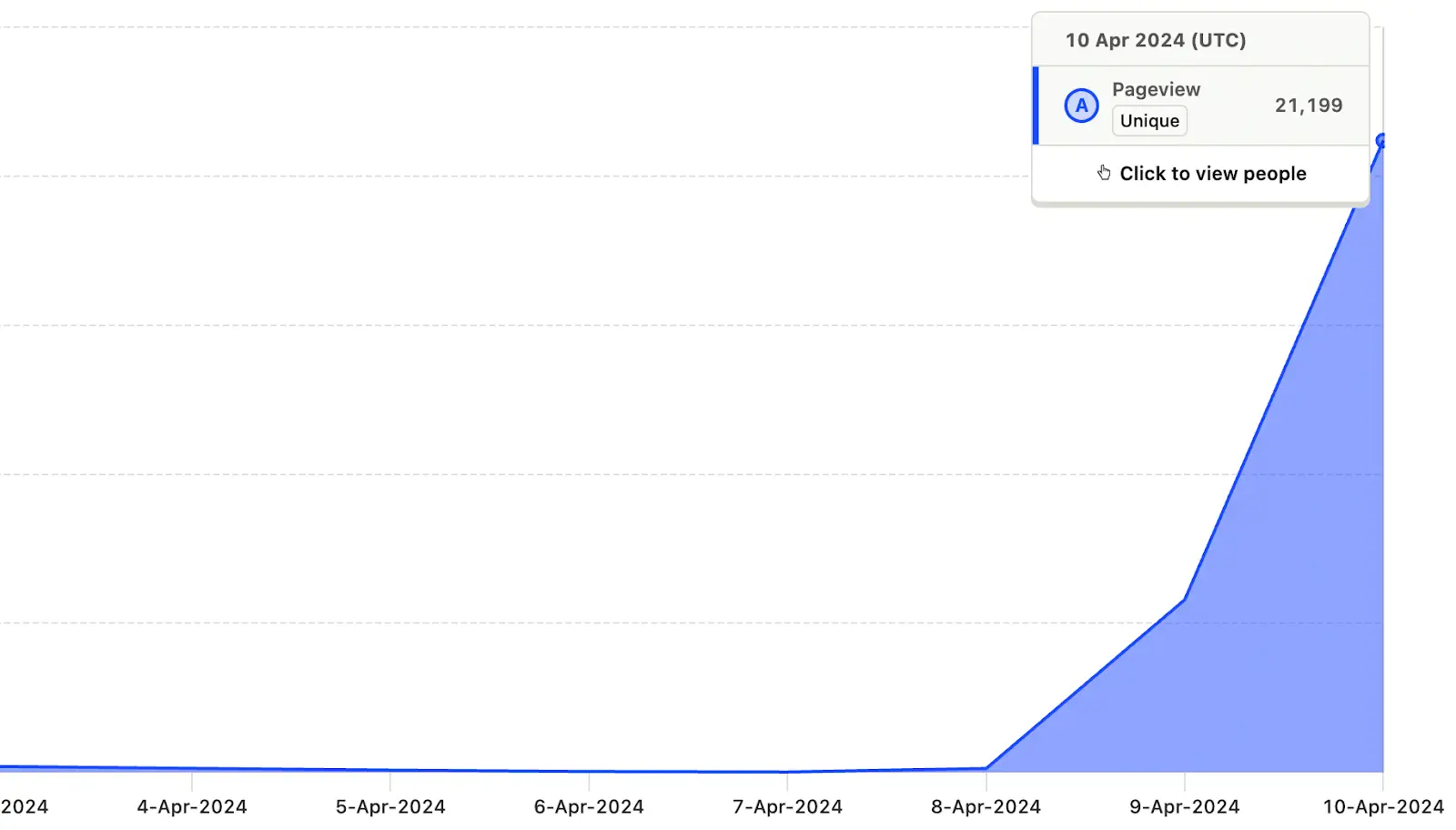How we leveraged a second chance to hit the front page of Hacker News


I’ve been a long time lurker on Hacker News, but launching PriceLevel made me become a first time poster. We decided to launch through Show HN because PriceLevel seemed like the type of content the HN community would like and they give honest feedback.
Before posting, I researched best practices for Show HN, and came across a couple of resources that are worth reading:
- Official Show HN guidelines
- Best of Show HN – a repository of all ShowHN posts
- IndieHacker blog post written by Daniel Nguyen who made it to the front page via the second-chance pool as well
One thing I noticed in reading past Show HN posts is that there’s not a lot of actual business posts. It’s mostly open-source projects, fun hobbies, side hustles, etc. Posts about startups were few and far between and it stressed the importance of not being too sales-y in our post. To me, Show HN isn’t about what the community can do for us (although we did want feedback), it’s about seeing if we built something that they wanted.
Breakdown of our actual post
Even though our post was only 10 sentences with a title, we wrote and rewrote them probably a dozen times to get the right information across while keeping it short. We followed these 5 rules which were inspired by the resources listed above:
- Make the title stand alone
- Make it personal
- Make the problem and solution obvious
- Make it easy to try the product
- Make the ask clear

1. Make the title stand alone
Hacker News only displays titles until you click into the post so you want to make sure your title can stand alone. Even though it’s tempting to write a marketing or sales heavy title, avoid the temptation. The HN community does not look kindly upon click-bait.
Your title should explain what your product actually does, in a simple and short manner. A 5 year old should understand what you’re building. Most Show HN titles follow the pattern “Show HN: [Product Name] – [What it does]”. We shamelessly imitated Daniel’s suggestion (thank you!) of “Show HN: I built [Product Name] to help you achieve [outcome]”.
2. Make it personal
Even though Hacker News is anonymous, people want to know who is behind the product and why it was built. This context helps the community understand where you’re coming from and give better feedback. It doesn’t have to be your whole life story or the company’s founding timeline, but just a few sentences goes a long way.
3. Make the problem and solution obvious
You built the product presumably to solve some problem. That problem could be so obvious to you that it’s faded into the background. However, the HN community is hearing about your product for the first time so make sure you address the problem in addition to the solution. Again, better context for better feedback.
4. Make it easy to try the product
I underestimated the importance of this until I clicked around a few Show HN posts. It’s a safe assumption that the HN audience is tech-savvy, but they’re not immune to friction. Hard gates, paywalls, or even requiring an account will decrease the amount of people willing to play around with your product. It’s worth the extra effort to make it friction-less.
For us, this meant creating a custom link for Show HN that would unlock all the information for one vendor. This way, people were able to see exactly what we were offering without having to create an account, use their preview, or give data. It was important to us to restrict it to one vendor since our pricing insights are our differentiator.
5. Make the ask clear
This is a simple one, but easy to forget. At the end of the post, tell the HN community what you’re looking for.
The second-chance pool
Be ready to lose your whole day after you post on Show HN. If you’re anything like us, you’ll repeatedly refresh the page to see signs of life engagement. After a few hours, we barely had any upvotes or comments which was disheartening, but we got a second life via the second-chance pool.

HN’s second-chance pool started in 2014 and is a way to give links a second chance at the front page. It’s important to know that this is just a chance. Your post still has to be interesting to stay on the front page aka get upvotes and comments. If it’s not interesting, it’ll naturally fall off the front page.
Also, make sure you have an email address in your Hacker News profile in order to get notified. Even though the email might seem automated, there’s a real human (Daniel) behind it. We thanked Daniel and had a whole back and forth conversation via email. He’s the real MVP of Hacker News.
The climb to #2
We stayed on the front page of Hacker News for over 24 hours. It was surreal to see our post climb steadily throughout the day, and my desktop is littered with screenshots of our post at #11, #8, #5, #3, and ultimately landing at #2. For the longest time we were behind the cow magnets post and when we finally surpassed them, we bought some cow magnets to remember the occasion.

One of the beautiful things about Hacker News is the community, they are the ones who decide if your post is worth the front page. A lively discussion likely leads to more comments and upvotes. To facilitate that, we:
- Went through every comment and created a Github ticket for things we wanted to implement or think about changing
- We responded to comments, but didn’t feel the need to do so for every single comment. The beauty of Show HN is that people will have full conversations with each other without us needing to jump in
- We followed-up on the original comment after we implemented all the suggested changes even if it was weeks later
The Show HN so-what
So what impact did launching on Show HN have for us? We had 21K unique visitors, 3x’d the amount of companies who contributed prices, and received our first dollar. More importantly, we made a significant product change that’s been the foundation for future iterations thanks to the feedback.

We also learned that pricing transparency really resonates. Our problem wasn’t isolated, and people have tried to solve it without finding a great solution.

If pricing transparency, or the lack thereof in the SaaS space, resonates with you, contribute to the PriceLevel community and help others get an understanding of what software costs.
